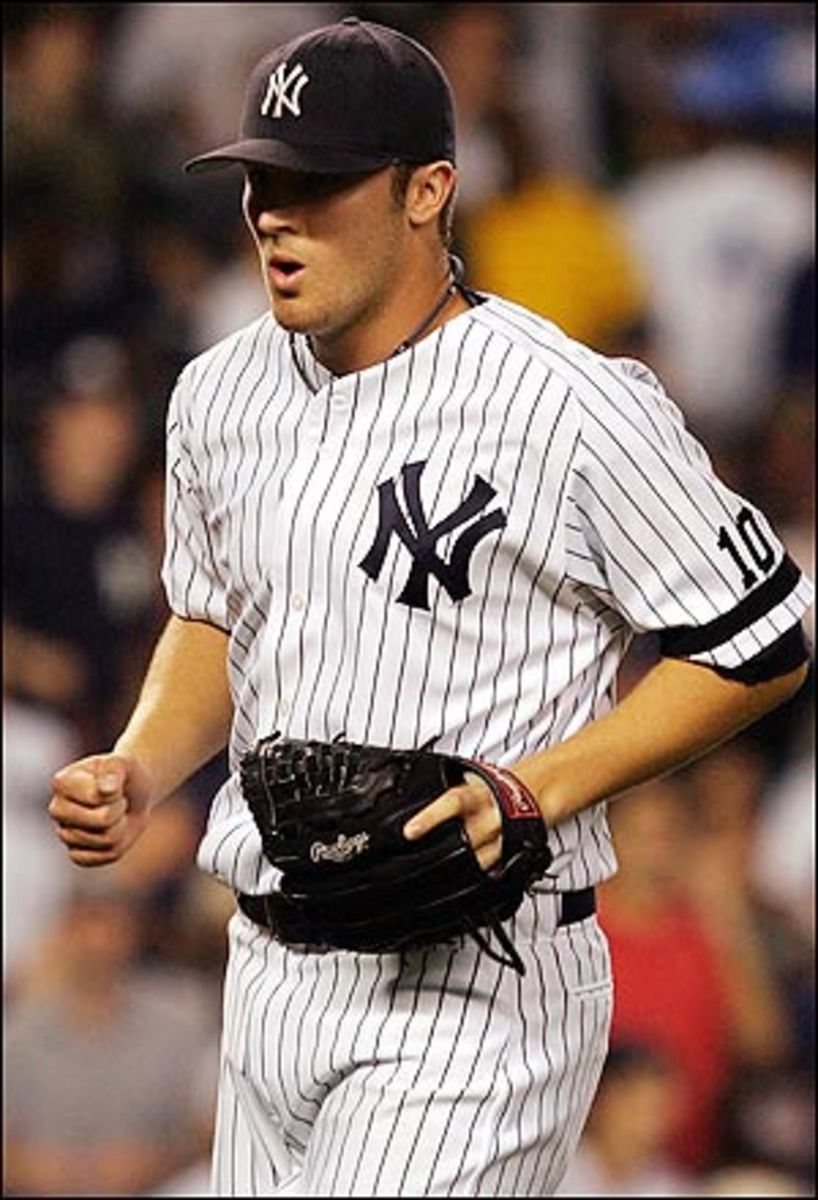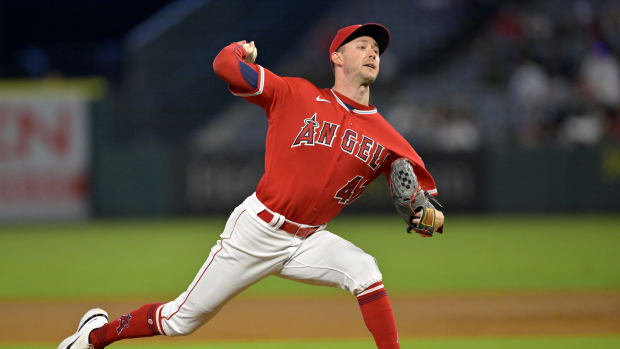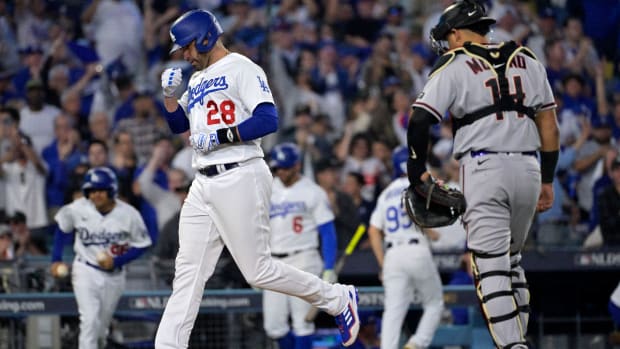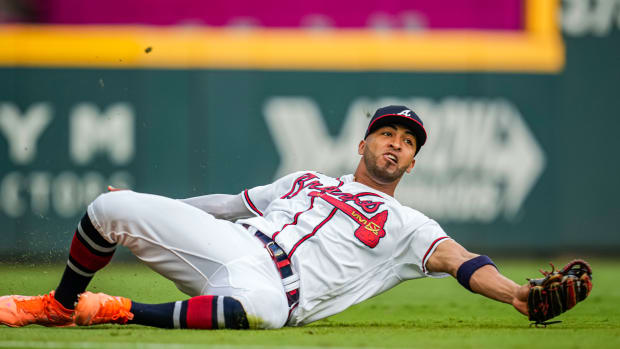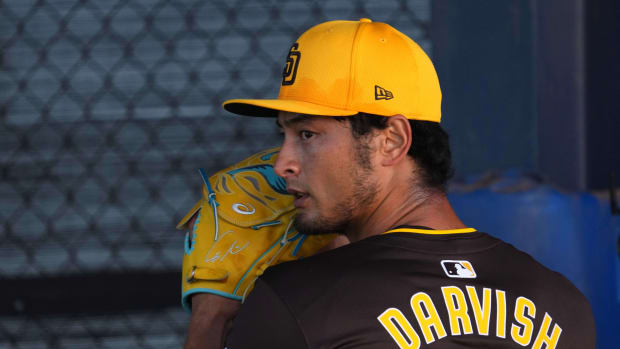Bronx cheer
In yet another sign that times have changed in the Bronx, the fact that the Mets have agreed to a trade that will bring the best pitcher in baseball to Queens has been received as good news by the Yankees and their fans. The Yankees had been in discussions with the Twins regarding Johan Santana earlier this offseason, at one time offering a package centered around right-hander Phil Hughes and center fielder Melky Cabrera, but the negotiations hit a snag regarding which additional prospects would be sent to Minnesota, as the Twins were reportedly asking for either right-hander Ian Kennedy or a combination of minor leaguers in starter Alan Horne and outfielder Austin Jackson.
Even in not making the trade, the Yankees managed to accomplish two of their primary goals which had previously seemed mutually exclusive: keep their own top prospects in pinstripes while keeping Santana away from the Red Sox.
Trading for Santana would have paid tremendous short-term dividends for the Yankees, possibly giving them the extra push they've needed to get back to the World Series, but given their young pitching talent, the team's long-term outlook is actually much brighter now than it would have been had the traded gone down.
The Yankees are a pitching-rich organization with a trio of ready-now starters, two of whom, 22-year-olds Hughes and Joba Chamberlain, are potential aces who will be in the major league rotation this year. According to Baseball Prospectus prospect guru Kevin Goldstein, the Yankees' collection of pitchers under age 25 is the second best in all of baseball, trailing only the Tampa Bay Rays.
Chamberlain and Hughes are projected to establish themselves as a dominant 1-2 punch atop the Yankee rotation, while 23-year-old Kennedy, who should also see time in the major league rotation this year, is expected to settle in as a mid-rotation starter. With two-time 19-game winner Chien-Ming Wang still several years away from free agency, and the 25-year-old Horne slated to start the year in triple-A, the Yankees have the makings of an entirely homegrown and cost-controlled rotation that could be among the best in the major leagues as early as 2009.
Parting with more than one of those pitchers as well as one or even both of the team's top centerfield prospects for the privilege of spending more than $20 million a year on a pitcher who is asking to be signed through is mid-30s was something Yankees general manager Brian Cashman was wisely unwilling to do.
While it's certainly optimistic to believe that Hughes could become an equal or even superior pitcher to Santana over the next five years, it's still possible, particularly since that Hughes was considered the top pitching prospect in baseball a year ago. With all else being equal, the exchange of Hughes' potential for the sure-thing of Santana would have been a no-brainer, but with the other players involved in the trade, it became a far more dubious proposition, and that's before factoring in the expense in dollars.
The trade between the Twins and Mets is contingent upon the Mets and Santana agreeing on a long-term contract extension. Though we don't yet know the years and dollars the Mets will be forced to commit to Santana in order to consummate the deal, it's generally assumed that the resulting contract will be the richest ever given to a pitcher.
Our own John Heyman speculated about a five-year extension with an average annual salary of $24 million. Another figure that's been tossed around has been an annual average of $25 million over six years, a total of $150 million. Even with Heyman's lower estimate, the Mets would be paying $120 million for Santana's age-30 to -34 seasons on top of the $13.25 million he's owed this season in the final year of his existing contract. In contrast, the Yankees will have Hughes under team control for the next five seasons at ages 22 to 26 for no more than arbitration prices. Even if Hughes makes $10 million in his final two arbitration years, the Yankees will likely pay him less over the next five years than the Mets will have paid Santana after just the first year of his extension.
Though the Yankees have never been a miserly organization, their payroll has remained largely stagnant since the 2004 season, hard evidence that the stories that circulated after the team's 2004 ALCS loss about the organization nearing the break-even point were likely true. Though the Yankees have a lot of big contracts coming off the books the next two offseasons, the massive deal they gave to Alex Rodriguez, along with the above-market contracts given to Jorge Posada and Mariano Rivera and the fact that Derek Jeter will likely want to be treated equally after his contract expires following the 2010 season, will keep the team's payroll among the highest in baseball.
It's all the more important, then, for the team to save where they can in order to make the necessary replacements that will be required in short order in the outfield corners and at first base. With regards to the latter, the savings from having Santana land elsewhere can be repurposed toward an offer to current Atlanta Braves first baseman Mark Teixeira in November, or for a deal like the one the Yankees just gave their own second baseman, Robinson Cano, that will keep their emerging young core together with the goal of producing yet another pinstriped dynasty.
For the Yankees and their fans, the disappointing part of the Mets acquiring Santana is not that the Yankees didn't get him and not that he went to a supposed rival -- the Yankees likely care much more that he's out of the AL than that he is in New York -- but that they won't be able to use some of that savings to make an offer to Santana after the season. The best case scenario would have been for him to remain a Twin and then join the Bombers as a free agent for the 2009 season. With Hughes, Chamberlain, Wang, Kennedy, and Horne still in place, however, the Yankees should be just fine without Santana and will do better to spend their money on filling out the heart of their 2009 lineup.
For all of these reasons, Santana to the Mets is good news in the Bronx. However, the most important may be the simplest of all: the Red Sox didn't get him.






























